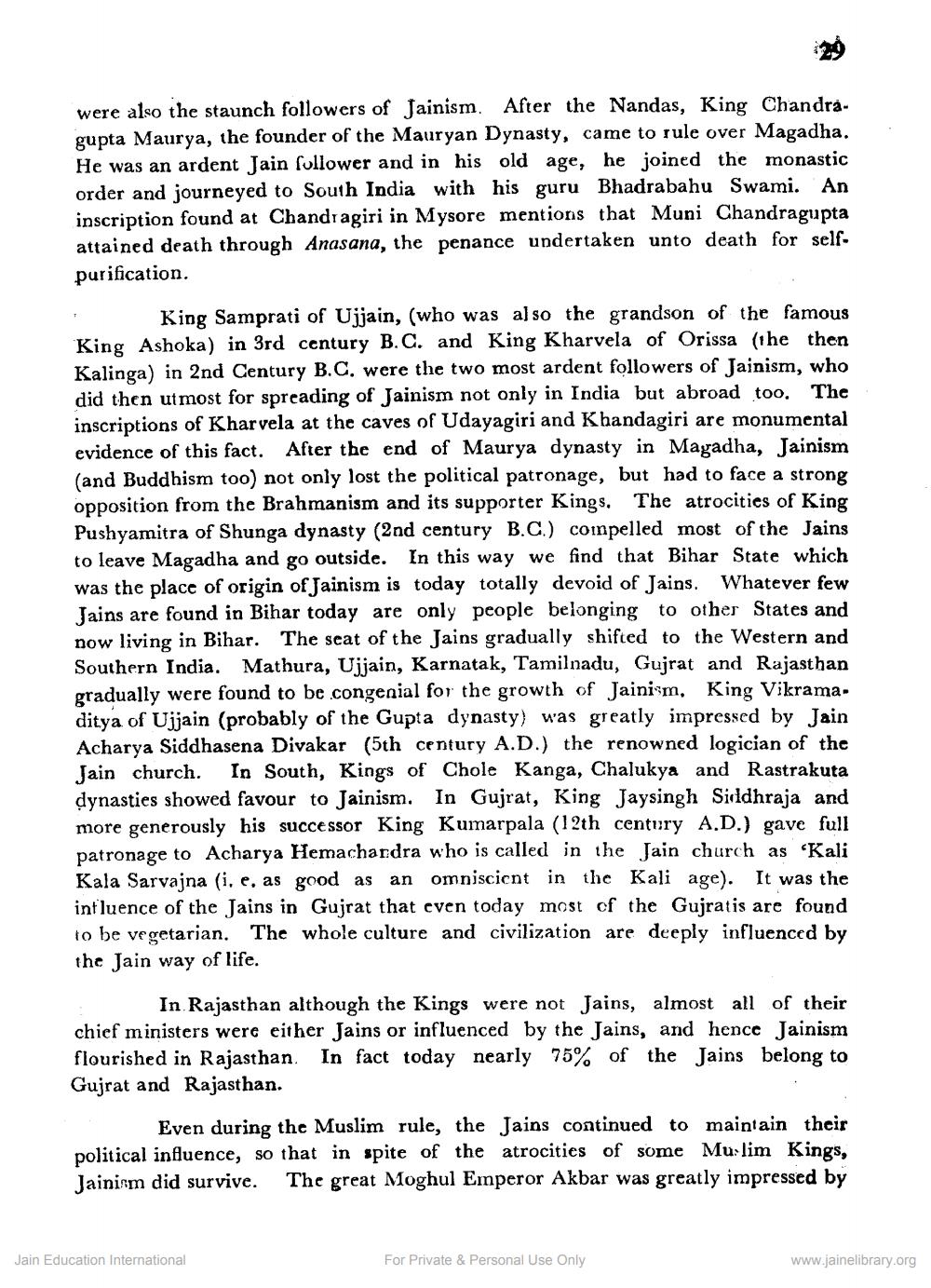________________
were also the staunch followers of Jainism. After the Nandas, King Chandragupta Maurya, the founder of the Mauryan Dynasty, came to rule over Magadha. He was an ardent Jain follower and in his old age, he joined the monastic order and journeyed to South India with his guru Bhadrabahu Swami. An inscription found at Chandragiri in Mysore mentions that Muni Chandragupta attained death through Anasana, the penance undertaken unto death for self. purification.
King Samprati of Ujjain, (who was also the grandson of the famous King Ashoka) in 3rd century B.C. and King Kharvela of Orissa (he then Kalinga) in 2nd Century B.C. were the two most ardent followers of Jainism, who did then utmost for spreading of Jainism not only in India but abroad too. The inscriptions of Kharvela at the caves of Udayagiri and Khandagiri are monumental evidence of this fact. After the end of Maurya dynasty in Magadha, Jainism (and Buddhism too) not only lost the political patronage, but had to face a strong opposition from the Brahmanism and its supporter Kings. The atrocities of King Pushyamitra of Shunga dynasty (2nd century B.C.) coinpelled most of the Jains to leave Magadha and go outside. In this way we find that Bihar State which was the place of origin of Jainism is today totally devoid of Jains. Whatever few Jains are found in Bihar today are only people belonging to other States and now living in Bihar. The seat of the Jains gradually shifted to the Western and Southern India. Mathura, Ujjain, Karnatak, Tamilnadu, Gujrat and Rajasthan gradually were found to be .congenial for the growth of Jainism, King Vikrama. ditya of Ujjain (probably of the Gupta dynasty) was greatly impressed by Jain Acharya Siddhasena Divakar (5th century A.D.) the renowned logician of the Jain church. In South, Kings of Chole Kanga, Chalukya and Rastrakuta dynasties showed favour to Jainism. In Gujrat, King Jaysingh Siddhraja and more generously his successor King Kumarpala (12th century A.D.) gave full patronage to Acharya Hemachandra who is called in the Jain church as "Kali Kala Sarvajna (i, e, as good as an omniscient in the Kali age). It was the intluence of the Jains in Gujrat that even today most of the Gujratis are found to be vegetarian. The whole culture and civilization are deeply influenced by the Jain way of life.
In Rajasthan although the Kings were not Jains, almost all of their chief ministers were either Jains or influenced by the Jains, and hence Jainism flourished in Rajasthan. In fact today nearly 75% of the Jains belong to Gujrat and Rajasthan.
Even during the Muslim rule, the Jains continued to maintain their political influence, so that in spite of the atrocities of some Mu:lim Kings, Jainism did survive. The great Moghul Emperor Akbar was greatly impressed by
Jain Education International
For Private & Personal Use Only
www.jainelibrary.org




